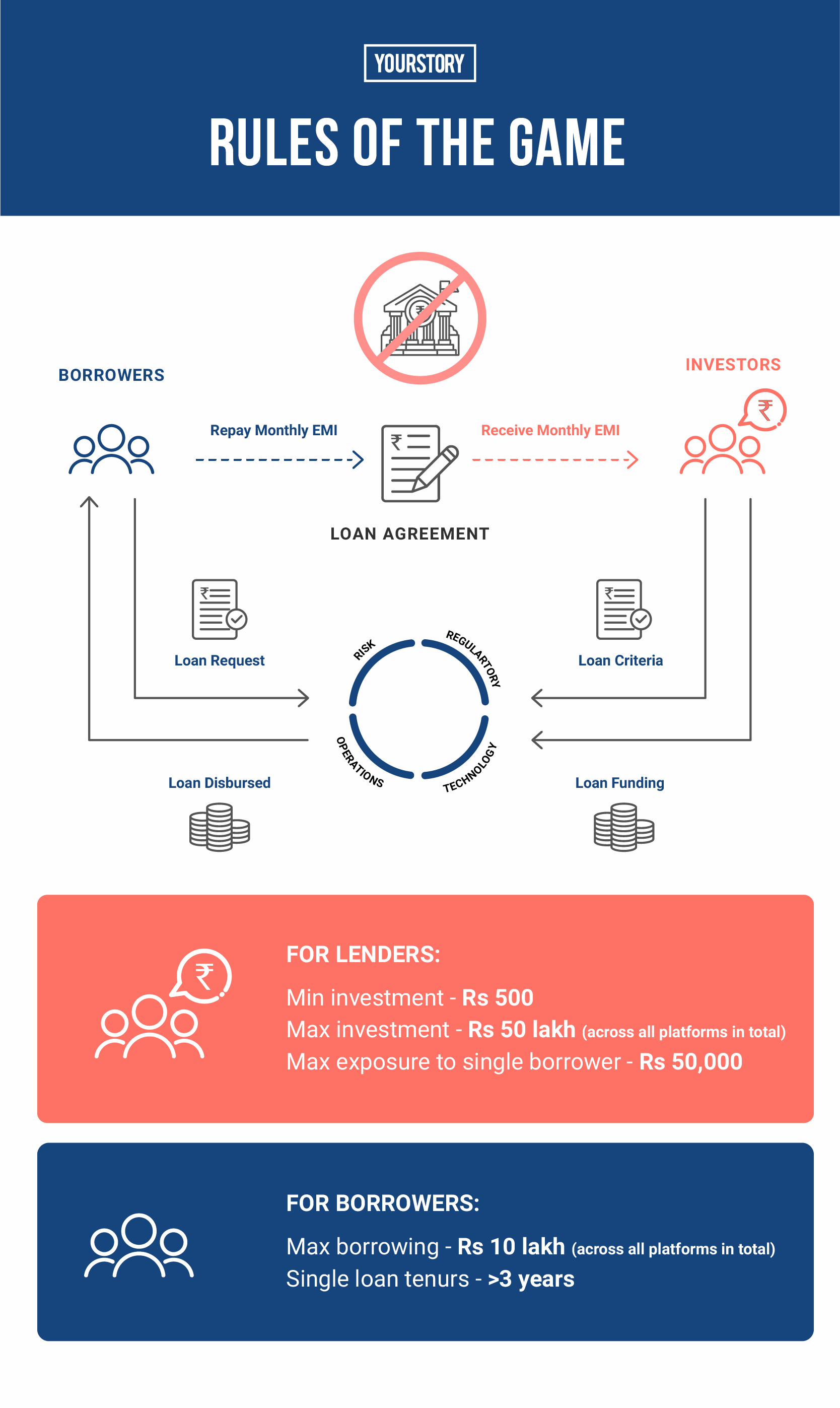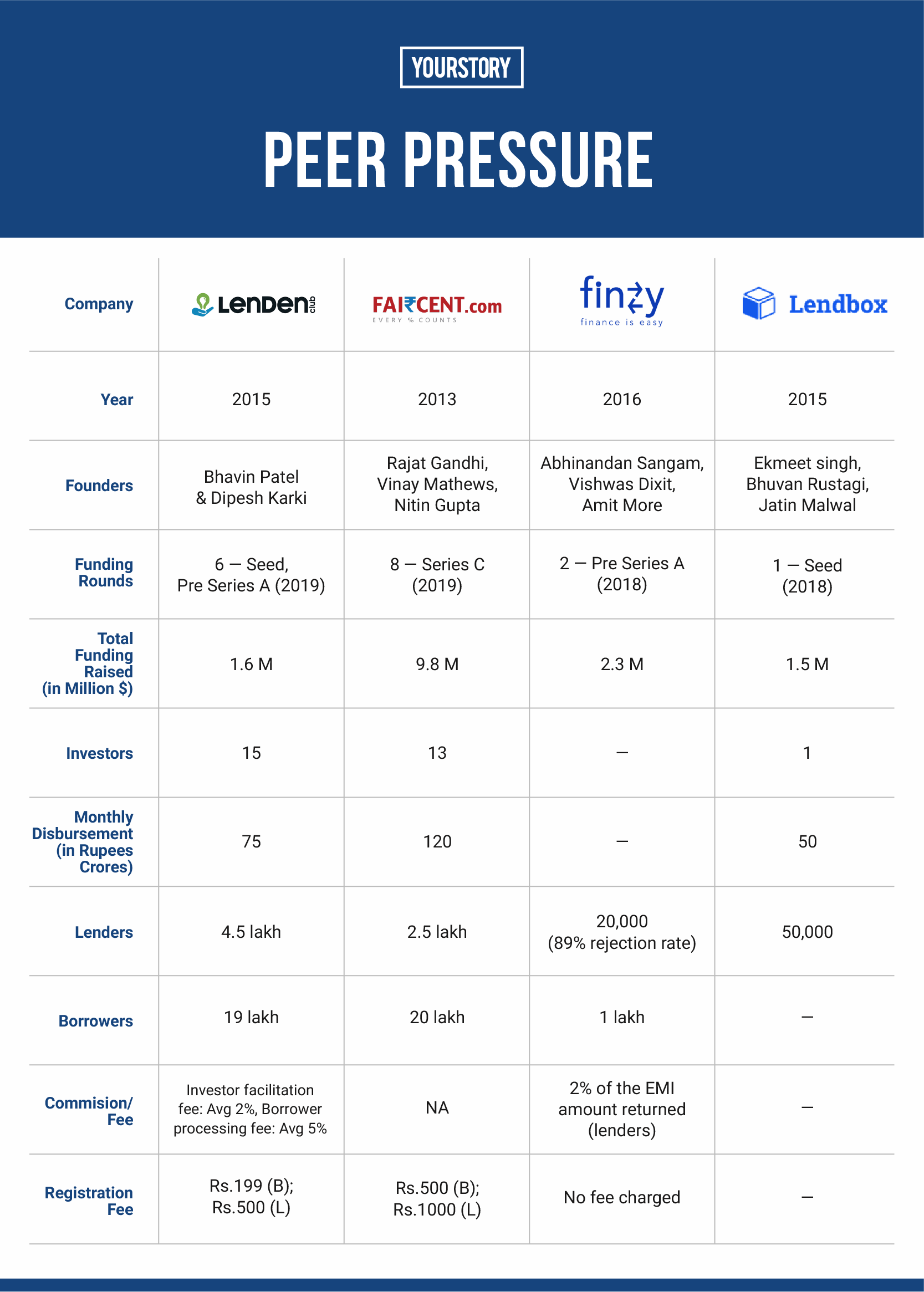Peer-to-Peer (P2P) lending, a sunrise sector in the Indian fintech landscape, has existed in the country for the past seven to eight years. These platforms offer unsecured loans and higher interest rates to borrowers compared to banks and NBFCs.
However, it was the RBI’s master directions in 2017, which brought the P2P lending segment under the regulatory purview. It brought in several changes and gave P2P lending platforms the licence to operate as P2P NBFCs (non-banking financial companies).
The 2017 regulation brought in two major changes — One, it separated the wheat from the chaff, leaving a handful of strong players to operate in the system. Second, it set the tone for P2P lending players to strengthen their business models and scale up, grabbing the eyes of institutional investors.
Between 2018-19, almost every P2P lending startup in the country raised Seed and Series A funding and hit the road. However, since then, not a single penny has been raised in the sector. Can this be concluded as lack of institutional investors’ interest due to presumed low potential of the sector, or a period of gestation for P2P lending startups?
We spoke to some of the top players like LenDenClub, Faircet, Finzy, Lendbox among others, and industry experts to understand the muted situation.

Maturing business models
According to Bhavin Patel, Co-founder and CEO of LenDenClub, every sector goes through a gestation period post initial funding.
Drawing a parallel with the ecommerce industry, he strikes an example of Flipkart and Myntra, who took their sweet time of around four to five years before picking up their first few rounds of funding and then going into the gestation mode.
“As they started growing and maturing, the funding boom came, and the rest is history. Similarly, P2P lending has been going through its own growth phase all these years and to date,” he adds.
Today, the sector is divided into two parts. Out of the total 21 licensed NBFC-P2P lending companies in India, only four to five are mature players with solid business models, and the rest are still in the gestation period. This is one of the reasons why funding did not make sense for both investors and companies all these years.
“If investment had come in the P2P segment earlier, it would have either reached the maturity level faster or broken down to go in some other direction. It didn’t go in either direction and three to four major players got enough time to bring their models to maturity and run successful business,” Patel says.
Not a capital-hungry sector
The actual need of money in the P2P lending sector is for two main things, explains Narayanan Mahadevan, Associate Director, Grant Thornton Bharat.
“Customer acquisition (both lenders and borrowers) and maintenance of the platform (analytics and management to underwrite the borrower better) are the two main costs. Otherwise, the money is between the lender and the borrower and the platform gets a fee. There is no need for a $200 million funding in the P2P sector unless one plans to do advertisements,” says Mahadevan.
This is one of the reasons we will not see colossal investment cheques in the P2P segment. It will always be in a decent range for product development and tech upgradation.
The crisis cocktail (early 2020)
As P2P lending players were nearing maturity with strong business models and products following the RBI regulations, they were bowed down with a host of other issues — the ‘crisis cocktail’. This further slowed down their journey with investors holding back.
“There has been an overall lack of active economic progression for three to four years. The entire lending sector was dragged down in the early 2020s in the wake of a series of events like the Yes Bank collapse, the FPI regulations, etc. Then came COVID-19, which hit the credit sector the hardest,” explains Siddarth Pai, Founding Partner at 3one4Capital.
The cocktail shall continue being stirred till 2022, he adds. It was not just P2P lending, but the entire lending sector which witnessed a slowdown.

Restriction keeping investments at bay
Besides the ‘crisis cocktail’ which muted the overall investment sentiment in lending, the collapse of China’s P2P lending sector in 2017 gave a black eye to the entire segment.
This is one of the reasons why the RBI came out with tighter norms — a matter of debate among stakeholders.
As per the RBI regulations, one can invest up to Rs 50 lakh across P2P platforms, and the exposure to a single borrower cannot go above Rs 50,000. This means, if you want to invest Rs 50 lakh, you need 100 borrowers across platforms. The minimum investment amount is Rs 25,000 and the tenure of a single loan cannot be more than three years.
“The upper limit of Rs 50 lakh limits the scope. The opportunity will increase as and when the cap increases besides the net worth, as it will lead to broader participation. No investor likes high market caps,” says Pai, who emphasises on the fact that the next set of changes are long overdue.
“The moment that happens (ease in regulations), the big ticket investment will come,” he adds.
Similar views were echoed by Jaikrishnan G, Partner and Head Financial Services Consulting at Grant Thornton Bharat.
“Business cases will certainly benefit if restrictions are eased out - not only on the distribution or product side of P2P companies, but also on the operations side as well. Limitations make it difficult for the model to sustain,” he says.
The experts also raise concern over the size of the business pie, which is restricted due to regulations. Except for insurance distribution, P2P players are not allowed to do any other value-added service on the platform, yet.
“The size of pie goes down even if you have millions of customers as you have only two services to offer. How much money can you make from that? If you are allowed to add more value services and make the size of the pie grow, the investors will be able to see some return and scale up opportunities,” says Jaikrishnan.
On the other hand, the founders differ on the view and say regulations have nothing to do with a potential investment, and are necessary in India to avoid another China debacle.
“The RBI has done quite a bit already. The funding in the sector has nothing to do with regulations. One change in regulation will not do anything,” says Amit More, Founder of P2P lending platform Finzy.

Future outlook: are VCs sitting on the fence?
Now that the sector has matured with players looking at more polished products, the discussion lies on what next? Is it ready for its next big round?
If we look at the post COVID numbers, the top P2P players have done fairly well. The annual run rate of these companies has gone up, and the majority of them have built strong product portfolios, with new ones in the offing.
While Faircent and LenDenClub want to continue focussing on the growing business and build new products, Finzy and Lendbox are already in talks with several investors for the next leap, as told to YourStory.
“Fundraising is an ongoing and a non-ongoing process. We are experimenting with our products like Faircent Pro with institutional lenders, building a more B2B B2C model besides user-specific secure lending, including vehicle and home category. Once our products are solidified, we would require capital and good investment,” says Rajat Gandhi, Founder and CEO, Faircent.
“In about 6-12 months, you will see us hitting the market as we touch the Rs 100 crore mark by 2022,” he adds.
According to Amit More of Finzy, the P2P lending segment will witness ‘mature transactions’ (Series C and D) in the next 12 to 18 months.
“Someone will take the lead in the sector. The mature players are building on the products and will soon raise capital. Since deals are not happening in the sector, the VCs are sitting on the fence. One deal and the ‘fear of missing out’ will unfurl and it would only be a matter of time before the funding floodgate opens,” says More, who plans to raise about $8-10 million in the coming months.
The sector has seen phenomenal growth in the last two years. Even during COVID-19, companies clocked strong numbers and doubled their revenues. LenDenClub became the first startup in the sector to hit profitability in the first quarter of FY21.
The growth phase has begun, says Patel. “Money will start going into R&D and product development as companies move away from offering vanilla loans to more user specific products and big ticket investments will pour in soon,” he adds.
According to a fintech expert, there will be a higher appetite for investors because they have been inactive for the last 18-24 months. There is enough liquidity in the system and ideal money. The opportunity for P2P lending is significant, especially SMEs, and they must make the most use of it.
“We have started the process to raise our next round already,” says Bhuvan Rustagi, Co-founder and COO of Delhi-based Lendbox.
“Investors are only showing interest in platforms that are customer-focussed and building high-quality assets for their users rather than just focussing on subprime lending. We see ourselves as an investor/lender-focussed business that is creating a new asset class and investors also see the same,” he adds.
P2P lending has the potential of becoming the next mutual fund in the next six to seven years. The industry stakeholders concur as they foresee the next phase of growth unleashing in the segment.
Edited by Megha Reddy
Link : https://yourstory.com/2021/07/p2p-lending-big-ticket-investment-next-growth-phase
Author :- Naina Sood ( )
July 21, 2021 at 05:10AM
YourStory


